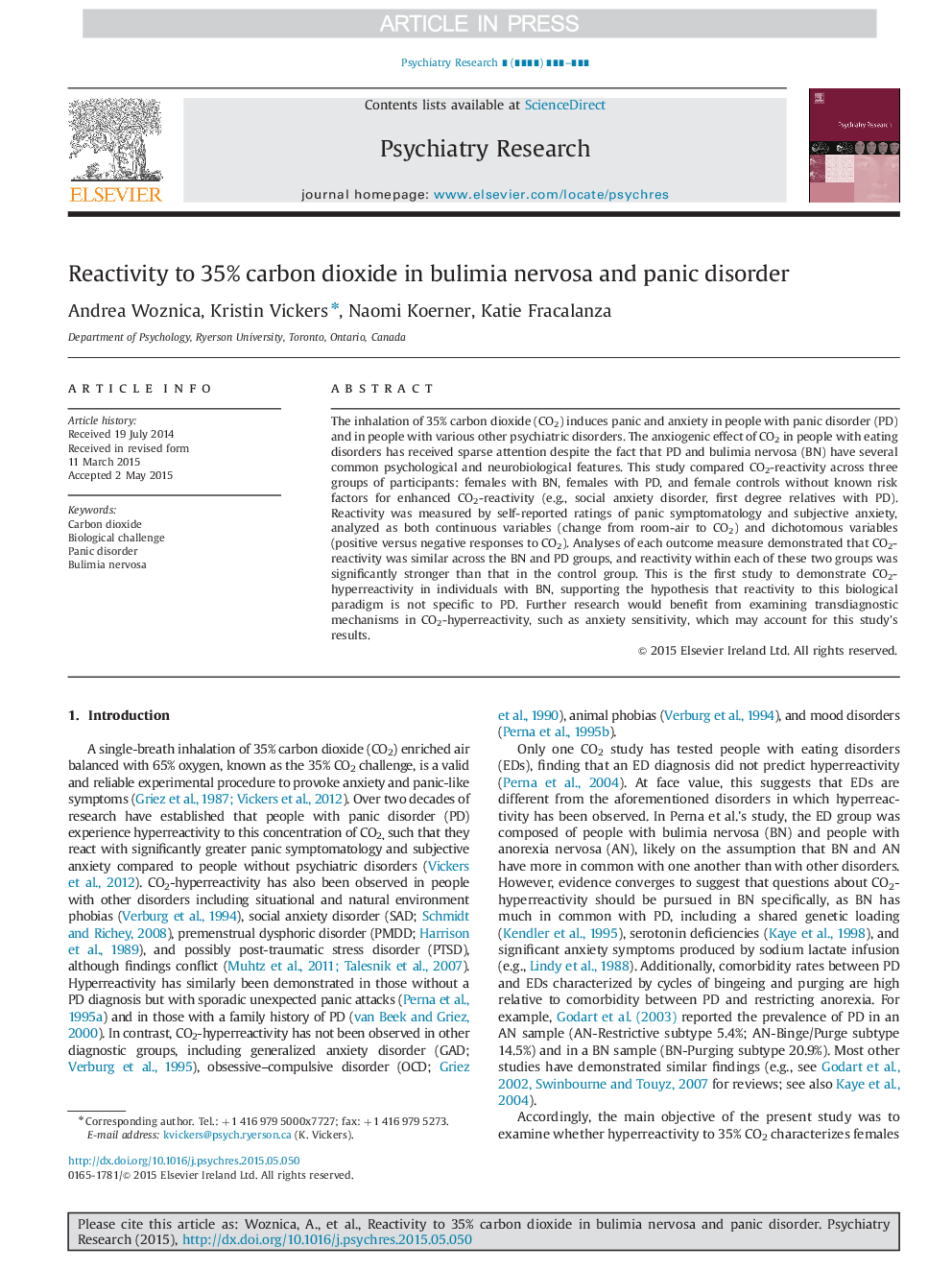| Article ID | Journal | Published Year | Pages | File Type |
|---|---|---|---|---|
| 10303711 | Psychiatry Research | 2015 | 5 Pages |
Abstract
The inhalation of 35% carbon dioxide (CO2) induces panic and anxiety in people with panic disorder (PD) and in people with various other psychiatric disorders. The anxiogenic effect of CO2 in people with eating disorders has received sparse attention despite the fact that PD and bulimia nervosa (BN) have several common psychological and neurobiological features. This study compared CO2-reactivity across three groups of participants: females with BN, females with PD, and female controls without known risk factors for enhanced CO2-reactivity (e.g., social anxiety disorder, first degree relatives with PD). Reactivity was measured by self-reported ratings of panic symptomatology and subjective anxiety, analyzed as both continuous variables (change from room-air to CO2) and dichotomous variables (positive versus negative responses to CO2). Analyses of each outcome measure demonstrated that CO2-reactivity was similar across the BN and PD groups, and reactivity within each of these two groups was significantly stronger than that in the control group. This is the first study to demonstrate CO2-hyperreactivity in individuals with BN, supporting the hypothesis that reactivity to this biological paradigm is not specific to PD. Further research would benefit from examining transdiagnostic mechanisms in CO2-hyperreactivity, such as anxiety sensitivity, which may account for this study׳s results.
Related Topics
Life Sciences
Neuroscience
Biological Psychiatry
Authors
Andrea Woznica, Kristin Vickers, Naomi Koerner, Katie Fracalanza,
